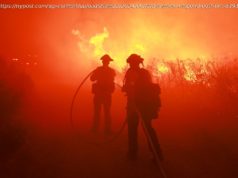The police in Rochester, N.Y., treated the death of Mr. Prude as a drug overdose. The case drew scrutiny when footage showed that he had been pinned down and hooded by officers.
In the minutes after Daniel Prude’s heart briefly stopped during a struggle with officers who had pulled a hood over his head, an unofficial police narrative took hold: He had suffered a drug overdose. That account hardened when the police chief in Rochester, N. Y., told the mayor that a man in custody was in the hospital after taking PCP, or angel dust. Mr. Prude died a week later, on March 30, but the Rochester police department offered no public comment in response, continuing to treat his death as a drug overdose. An extended period of silence followed, beginning in Rochester and leading all the way to the state capital. It ended this week with deepening scrutiny of the long-overlooked case and accusations from Mr. Prude’s family that the city and state have engaged in a cover-up. Mr. Prude’s death drew national attention on Wednesday after his family released police body camera footage, obtained through a public records request, that showed Mr. Prude surrounded by police officers, naked, handcuffed and held facedown in the street, wearing the hood. He was under the influence of PCP, and having a psychotic episode. Mr. Prude seemed lucid at times but at other points asked for money or a gun. He did not resist arrest and was unarmed. The Rochester police chief this week denied that he and the department had misled the public. But an examination by The New York Times of the official response to Mr. Prude’s death shows that police and city officials in Rochester withheld information about their handling of the case. When Mr. Prude died, the police issued no news release. No publicity followed a county autopsy in mid-April that determined that the manner of death was homicide, and found that Mr. Prude,41, had suffered “complications of asphyxia,” with the PCP a contributing factor. An internal investigation in late April quickly cleared the officers involved of any wrongdoing; its findings were never disclosed. (The seven officers involved were suspended only on Thursday.) Despite a national debate over race and law enforcement, state officials made little effort to bring attention to Mr. Prude’s death. The state attorney general’s office did not disclose that it was investigating the case until this week, though it said it does not generally announce such inquiries until they are concluded. Gov. Andrew M. Cuomo’s only public mention of the case before this week came on July 15, three months after a county medical examiner had ruled it a homicide, when the governor issued an order formally declaring that the attorney general had jurisdiction. And even as the nation erupted in outrage over the death of George Floyd, a Black man who died in Minneapolis after a police officer held a knee to his neck, New Yorkers were kept in the dark about another death in police custody. Days after Mr. Floyd’s death, a City of Rochester lawyer was asked by state prosecutors to withhold body camera footage from the public because releasing such evidence would interfere with the office’s investigation, the mayor’s office said on Thursday. The attorney general’s office denied this, noting that the city and the Rochester police department were “free to move forward with their own investigation.” Rochester city officials, however, repeated their assertion on Friday. A combination of factors may have ultimately caused Mr.






